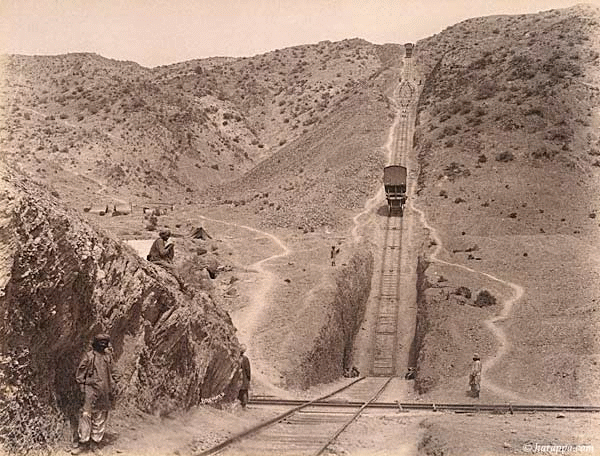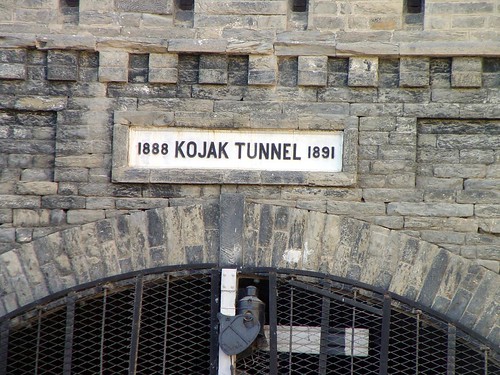https://www.google.co.in/url?sa=t&s...9wdlHUteK_YjNgyYA&sig2=A2obF8YkmLMomq5ppUBuKg
Above is the link to PDF version of the highlights of the Union Rail Budget 2016-2017.
Here are a few extracts -
Financial Performance
2015-16- Savings of Rs. 8,720 crore neutralizing most of the revenue shortfall,
expected OR 90%;
2016-17- Targeted Operating Ratio (OR) - 92%, restrict growth of Ordinary Working
Expenses by 11.6% after building in immediate impact of 7th PC, reductions planned in diesel and electricity consumption, Revenue generation targeted at Rs. 1,84,820 crore.
Investments and Resources
Process bottlenecks overhauled including delegation of powers to functional levels;
average capital expenditure over 2009-14 is Rs. 48,100 crore, average growth of 8%
per annum.
2015-16 investment would be close to double of the average of previous 5 years.
2016-17 CAPEX pegged at Rs. 1.21 lakh crore; implementation through joint ventures with states, developing new frameworks for PPP, etc.
Vision
By 2020, long-felt desires of the common man to be fulfilled i.e, reserved
accommodation on trains available on demand, time tabled freight trains, high end
technology to improve safety record, elimination of all unmanned level crossings,
improved punctuality, higher average speed of freight trains, semi high speed trains
running along the golden quadrilateral, zero direct discharge of human waste.
2015-16-Achievements
Action initiated on 139 budget announcements of 2015-16
Project execution
2015-16 - assured funding through LIC; commissioning of 2,500 kms Broad Gauge
lines; commissioning of 1,600 kms of electrification, highest ever. In 2016-17 -
targeted commissioning 2,800 kms of track; commissioning Broad Gauge lines @
over 7 kms per day against an average of about 4.3 kms per day in the last 6 years.
Would increase to about 13 kms per day in 2017-18 and 19 kms per day in 2018-19;
will generate employment of about 9 crore man days in 2017-18 and 14 crore man
days in 2018-19. Outlay for railway electrification increased in 2016-17 by almost 50%; target to electrify 2,000 kms.
Dedicated Freight Corridor
Almost all contracts for civil engineering works to be awarded by March 31st 2016;
Rs. 24,000 crore contracts awarded since November 2014 as against Rs. 13,000 crore
contracts awarded in last 6 years; propose to take up North-South, East-West & East
Coast freight corridors through innovative financing including PPP.
North East
BG Lumding-Silchar section in Assam opened thus connecting Barak Valley with rest of the country; Agartala brought on to the BG network. States of Mizoram and
Manipur shortly to come on BG map of the country with commissioning of the
Kathakal-Bhairabi and Arunachal-Jiribam Gauge Conversion projects.
Make in India
Finalised bids for two loco factories; proposed to increase the current procurement of train sets by 30%.
Other major achievements
Energy: annualized savings of Rs. 3,000 crore to be achieved in the next financial
year itself, a year earlier than announced; achieved by procuring power directly at
competitive rates using IR’s status as Deemed Distribution Licensee.
Rail University – initially identified the National Academy of Indian Railways at
Vadodara.
The Way Ahead
Improving quality of travel
For the unreserved passenger –
Antyodaya Express unreserved, superfast service.
Deen Dayalu coaches – unreserved coaches with potable water and higher number of mobile charging points.
For the reserved passenger –
Humsafar - fully air-conditioned third AC service with an optional service for meals
Tejas - will showcase the future of train travel in India. Will operate at speeds of 130
kmph and above.Will offer onboard services such as entertainment, local cuisine, Wi-
Fi, etc. through one service provider for ensuring accountability and improved
customer satisfaction
Humsafar and Tejas to ensure cost recovery through tariff and non-tariff measures
UDAY - overnight double-decker, Utkrisht Double-Decker Air-conditioned Yatri
Express on the busiest routes, has the potential to increase carrying capacity by almost 40%.
Travel Insurance to passengers
to offer optional travel insurance for rail journeys at the time of booking.
Hourly booking of retiring rooms
will be handed over to IRCTC.
Janani sewa
children’s menu items on trains, baby foods, hot milk and hot water would be made available.
Improving customer interface
skilling our front-end staff and those we employ through our service providers, information boards in trains enumerating the on-board services and also GPS based digital displays inside coaches to provide real time information regarding upcoming halts. Work underway on installation of a high-tech centralized network of 20,000 screens across 2000 stations for enabling real time flow of information to passengers and also unlock huge advertising potential. All A1 class stations will be manned with duly empowered Station Directors supported by cross functional teams; to make one person
accountable for all facilities on trains.
High Speed Rail
passenger corridor from Ahmedabad to Mumbai being undertaken with the assistance of the Government of Japan. SPV for implementing high speed projects will be registered this month. Prime benefit would be providing IR with technology advancements and new manufacturing capability.
Winning back the lost modal share
Expanding the freight basket of IR - to start time-tabled freight container, parcel and
special commodity trains on a pilot basis, container sector would be opened to all trafficbarring coal, specified mineral ores and part-loads during the non-peak season. All existing terminals/sheds would be granted access to container traffic, where considered feasible.
Rationalising the tariff structure – undertake review of tariff policy to evolve a competitive
rate structure vis a vis other modes, permit multi-point loading/unloading and apply
differentiated tariffs to increase utilization of alternate routes, explore possibility of signing
long term tariff contracts with our key freight customers using pre-determined price
escalation principles.
Building terminal capacity - proposed to develop Rail side logistics parks and warehousing in PPP mode, 10 goods sheds will be developed by TRANSLOC, the Transport Logistics Company of India, in 2016-17. To soon inaugurate India’s first rail auto hub in Chennai. Encourage development of cold storage facilities on vacant land near freight terminals. Local farmers and fisherman would be given preferential usage of the facility. A policy in this regard would be issued in the next 3 months.
Sashaktikaran
Improving our planning practices
To set up a Railway Planning & Investment Organisation for drafting medium (5
years) and long (10 years) term corporate plans; identify projects which fulfill the
corporate goal. Prepare a National Rail Plan to harmonise and integrate the rail network with other modes of transport and create synergy for achieving seamless multi-modal transportation network across the country
Shodh aur vikas
Investing in the future: to set up a R&D organization, a Special Railway Establishment for Strategic Technology & Holistic Advancement, SRESTHA. RDSO will now focus only on day to day issues while SRESTHA would drive long term research.
Budget Estimates 2016-17
The intention to improve revenues and ensure appropriate investments which can
continue the road-map of decongestion and enhance line-capacity enhancement as
detailed in 2015-16. The focus is on enhanced CAPEX with a mix of various sources of funding in order to ensure that the projects are given assured funding.
Gross Traffic Receipts kept at Rs 1,84,820 crore . Passenger earnings growth has been
pegged at 12.4 % and earnings target budgeted at Rs. 51,012 crore. The freight traffic is pegged at incremental traffic of 50 million tonnes, anticipating a healthier growth in the core sector of economy. Goods earnings is accordingly proposed at Rs. 1, 17,933 crore. Other coaching and sundries projected at Rs. 6,185 crore and Rs. 9,590.3 crore respectively.
OWE provides for the implementation of the 7th CPC.
Pension outgo budgeted at Rs 45,500 crore in 2016-17.
Railways are preparing a Plan size of Rs. 1,21,000 crore in 2016-17.
@anant_s sir your thoughts.
























